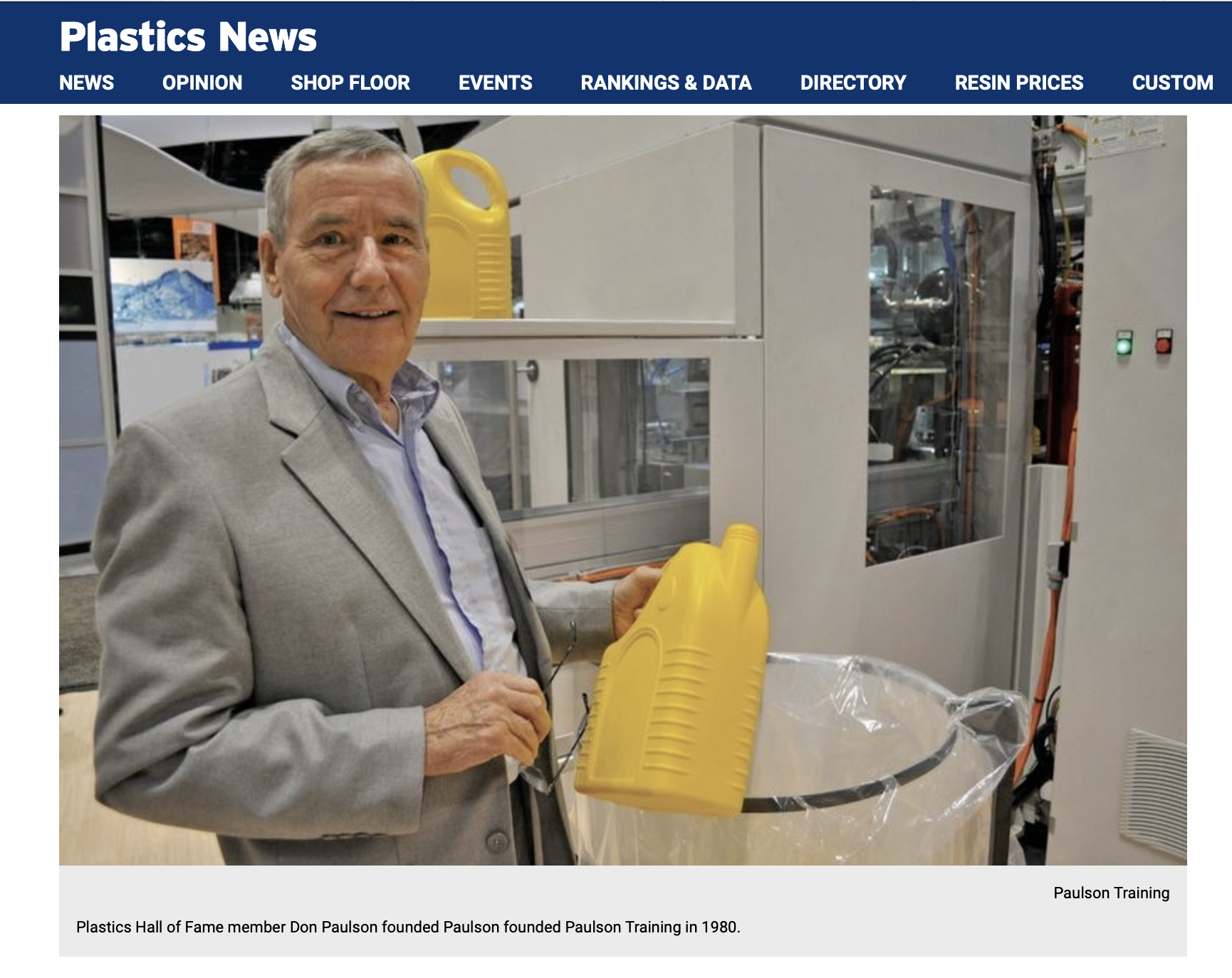We have a saying at Paulson…
“Either you are going to train your employees or they are going to train themselves”
So what does that really mean? The short version is that every plastics processing plant, whether injection molding, extrusion, blow molding, thermoforming, etc. needs trained personnel. The skilled labor shortage in the plastics industry makes it very difficult to find the right employee(s) in your area, at a reasonable wage level and with the assurance that they will stay beyond the next job offer they get (at a higher wage). So a lot of plastics manufacturers are hiring people with either little production floor experience or no production floor experience at all.
 This lack of experience, by definition, requires that these new hires be trained. What is the most common approach to training them? Usually it is putting them on the floor with an experienced employee who then shows them what they need to do and how they need to do it. They’ll also pick up “training lessons” from co-workers in their area of production that may or may not be in line with the training lessons YOU want them to get – the information YOU know is the best for their job function.
This lack of experience, by definition, requires that these new hires be trained. What is the most common approach to training them? Usually it is putting them on the floor with an experienced employee who then shows them what they need to do and how they need to do it. They’ll also pick up “training lessons” from co-workers in their area of production that may or may not be in line with the training lessons YOU want them to get – the information YOU know is the best for their job function.
So there are basically 2 choices when it comes to employee training:
- Use the time tested on-the-job training method (OJT). This at first looks like the cost-effective solution. No cash outlay for training, new employees are trained by experienced employees (minimum disruption to production) and all the training can happen right on the production floor. In effect, OJT turns the new employee training function over to your employees – they’re training themselves.
- Be proactive and have a standardized training program (or system) that all employees must go through. The advantages here are obvious. You get everyone learning the same information in the same way, you get a common “language” being spoken on the production floor, and you get employees with a much higher job satisfaction level than an untrained employee.
The single biggest problem with relying on OJT as your primary training method is that is VERY expensive. Employees are essentially learning from their mistakes. Obviously, there is no way to completely eliminate “learning from your mistakes”. We’re human. We’re going to screw up occasionally. The secret is to minimize those mistakes.
If you don’t have a training system in place, chances are very high that you are throwing profits away in the form of machine downtime, sub-optimal machine setup (like longer than necessary cycle times) and part defects. By the way, one defective part costs 3x what a good part costs. Why? You’ve lost the machine time used to make the bad part, you have to find the bad part, you may or may not be able to use regrind and you have to mold the part it again which uses machine time.



